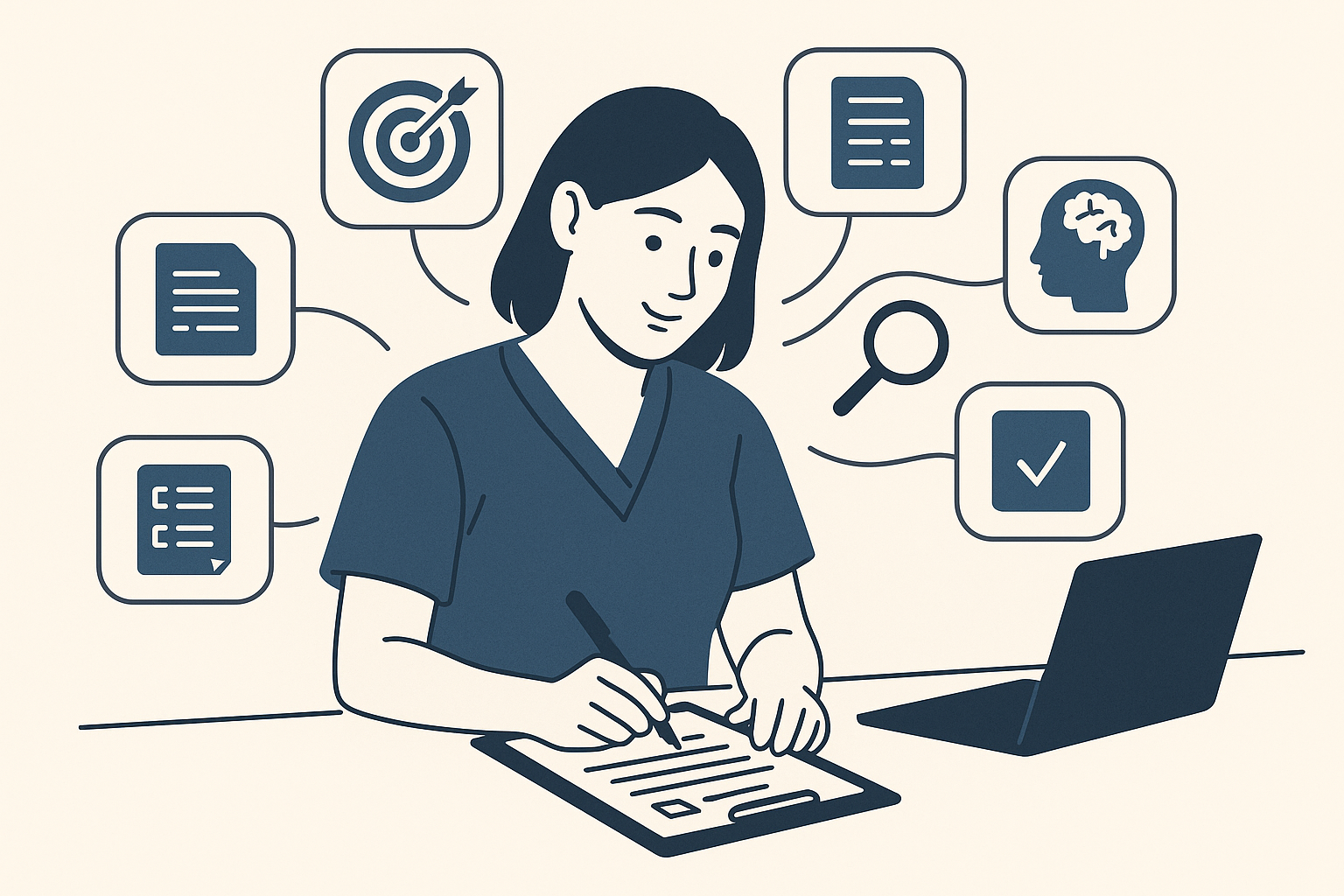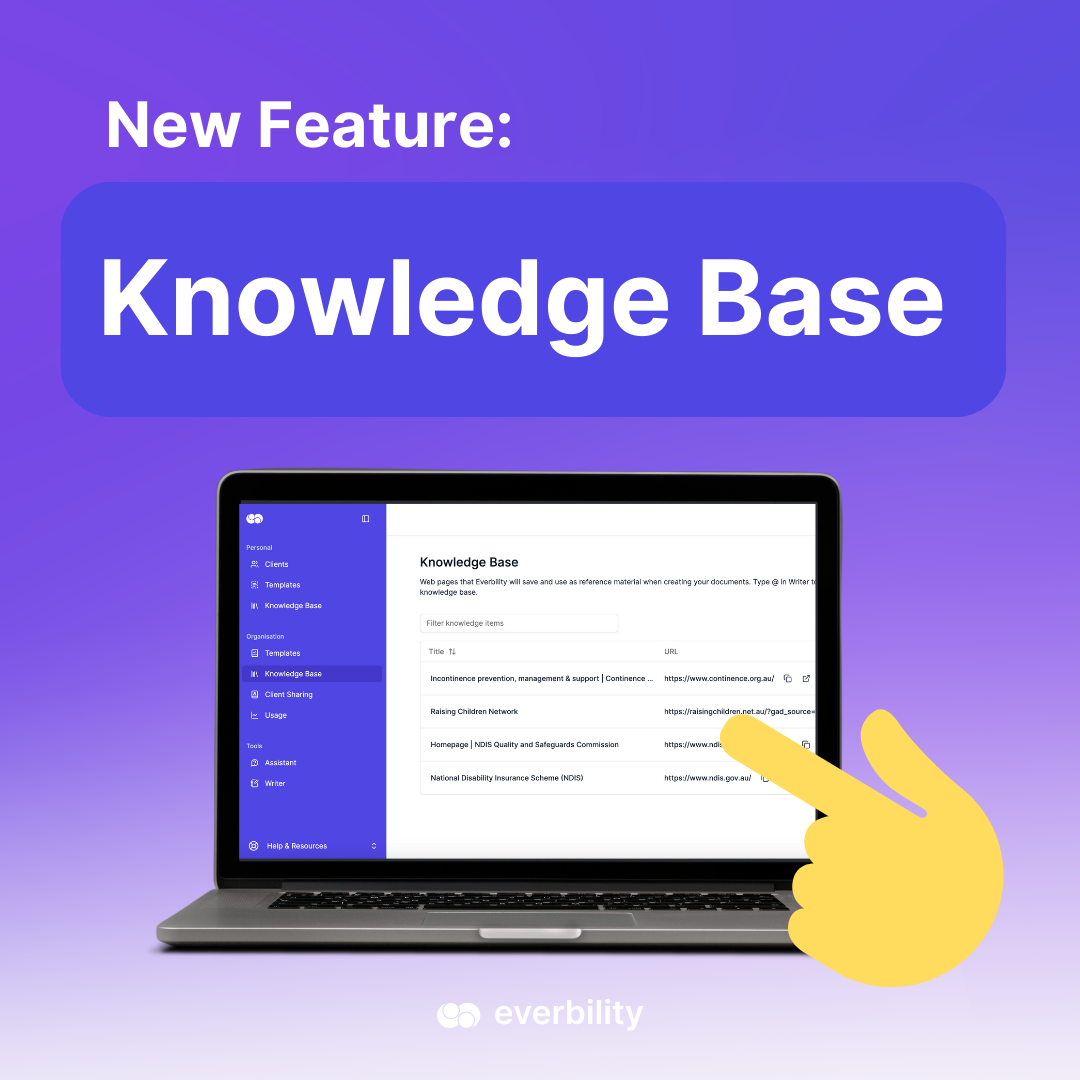- Published on
From Notes to Impact: Writing Documentation That Actually Supports Client Outcomes
- Authors
- Name
- Bella Martini

Introduction
- Start With Purpose
- Be Specific, Not Generic
- Include Clinical Reasoning
- Use Research to Back Your Decisions
- Templates Can Help, But They Shouldn’t Replace Thinking
- Final Thought: Your Notes Are a Reflection of Your Care
It’s easy to get caught up in the rush of clinical life where documentation becomes just another task to tick off.
But great documentation does more than meet compliance.
It becomes a powerful tool to support client progress, inform clinical decision-making and communicate value to others involved in care.
So how do you move from basic notes to impactful ones, without doubling the time you spend writing?
Start With Purpose
Before writing, ask yourself: What is the goal of this note or report? Who will read it, and what do they need to know to support the client? A quick mental check-in with the “why” behind your writing helps you stay focused and concise.
Be Specific, Not Generic
Replace vague phrases like “client responded well” with concrete descriptions of what was said, done or achieved. This not only improves clarity but helps you and your team track real progress over time.
Include Clinical Reasoning
Your documentation isn’t just about what happened. It’s also about why. Briefly explaining your decisions or observations can be a powerful way to demonstrate the expertise behind your practice. For example:“Due to reduced attention span observed during tabletop tasks, activities were shortened and alternated with movement breaks to support engagement.”
Use Research to Back Your Decisions
Referencing guidelines or evidence can strengthen your recommendations and show alignment with best practice. But this doesn’t mean digging up papers mid-session.

If you’re using Everbility, the Knowledge Base feature makes this seamless. Simply upload trusted guidelines or research articles into your workspace, and use @ to pull them into your prompts as needed.
For example:
Use the latest evidence from @OTCognitiveRehabGuidelines to inform my recommendations for this client’s return-to-work plan.
Or: "Summarise findings from @ADHDSupportStrategies and integrate them into this client’s treatment plan."
This turns evidence into a part of your everyday clinical reasoning, without adding time or complexity to your workflow.
Templates Can Help, But They Shouldn’t Replace Thinking
Using templates or smart text is helpful, especially for repetitive formats. Just be sure they’re flexible and leave room for individualisation. One-size-fits-all notes rarely do justice to the richness of your clinical work.
Final Thought: Your Notes Are a Reflection of Your Care
Clear, purposeful documentation helps your future self, your team and your clients. It’s not just admin. It’s advocacy, communication and clinical integrity in written form.
Want to see how Everbility’s Knowledge Base can support evidence-informed documentation with less effort?